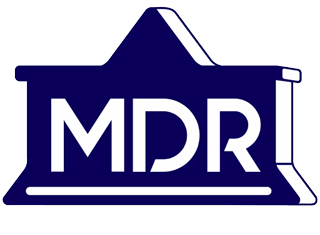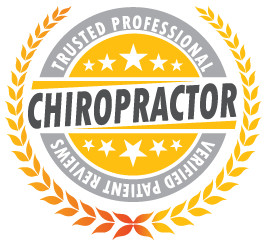Spine Matters: Do You Love Your Backbone?

Your spine may not be something you think about a lot, but it’s one of the most important parts of your body. However, without it you could not keep yourself upright or stand. The spine gives your body structure and support. The backbone is the central member in the musculoskeletal system. It supports your entire body and allows you to make every movement. Your spine has three major functions: protecting the spinal cord and associated nerve roots, providing structural support and balance to maintain an upright posture, and enabling flexible motion
The spine is composed of 33 bones called vertebrae. Vertebrae are stacked on top of each other with 3 major curves. In addition, your spine has 120 muscles, 100 joints, and about 220 ligaments. There are also 31 pairs of nerves that snake through the openings of your vertebrae to deliver messages between your brain and muscles. Your spine is, in fact, a mechanical marvel.
Sections of the Spine
Actually, the spine is composed of three main sections. The cervical spine is the upper part of the spine. It is made up of 7 vertebrae. The next 12 vertebrae are the thoracic section. Finally, the lower section of 5 or 6 make up the lumbar region. Some people have 5 and some have 6 lumbar vertebrae. A normal spine makes an “S” like curve. This allows an even distribution of our weight and helps the backbone withstand all kinds of stress.
Atlas and Axis
Two vertebrae in the cervical spine differ from the other vertebrae because they are designed specifically for rotation. These two vertebrae are the atlas and the axis. Special ligaments between these two vertebrae allow a great deal of rotation to occur between the two bones. They allow your neck to rotate in so many directions, including looking to the side.
The atlas is the first cervical vertebrae. It is the one that sits between the skull and the rest of spine. The atlas does not have a vertebral body but does have a thick forward (anterior) arch and a thin back (posterior) arch, with two prominent sideways masses.
The atlas sits on top of the second cervical vertebra. It is the axis. The axis has a bony knob called the odontoid process that sticks up through the hole in the atlas. As a result, this special arrangement allows the head to turn from side to side as far as it can.
Sacrum
The lowest section of the backbone is the sacrum. Specifically, they are specialized vertebrae that fuse together during development in the womb and connect the spine to the pelvis. The sacrum forms the base of the spine and the center of the pelvis. Importantly, the nerves that leave the spine in the sacral region control the bowel and bladder functions and give sensation (feeling) to the crotch area.
Intervertebral Discs
Between the vertebrae are the intervertebral discs. These discs are cushions to be shock absorbers between the bones. Each disc has a strong outer ring of fibers known as the annulus and a soft jelly-like center called the nucleus pulposus. Damaged discs can lead to painful conditions such as a herniation or bulging discs.
Facet Joints
The vertebrae are held together with facet joints. They allow the vertebrae to stay connected and also be able to move and be flexible. Without these joints we would be stiff and only be able to move in one direction.
Nerves
The spine is the main partner to the brain to carry information and coordinate activity throughout the body. The vertebrae in the spine each has a hole in the center. When the vertebrae are properly aligned, they stack up and leave a hollow tube for the spinal cord. As a result, the vertebrae protect the spinal cord. Furthermore, the nervous system uses the spine to transmit electrical impulses resulting in feelings of sensation. Sensory information like pressure, touch, cold, warmth, pain and sensations in the skin, muscles, joints and internal organs all originate in the spine. It’s important to note that if these spaces are misaligned, the spinal cord gets pinched and cause pain.
Neural Foramen
Between every 2 vertebrae, there is an opening called the neural foramen. These openings allow nerves to exit the spine and reach the rest of the body. These for amen need to remain open and healthy so that the nerves can easily come through without being pinched.
Spinal Segments
Spine specialists sometimes look at a spinal segment to understand and explain how the whole spine works. A spinal segment is made up of two vertebrae attached together by ligaments, with a soft disc separating them. The facet joints fit between the two vertebrae, allowing for movement, and the neural foramen between the vertebrae allow space for the nerve roots to travel freely from the spinal cord to the body. These spinal segments create a repeating pattern. Sometimes if there is a problem in the spine, it may only involve one segment of the spine. Other times a problem will involve multiple segments.
Mental Health
The spine also has an impact on your mental health. A spine that is not properly aligned can lead to hormone imbalance, migraines, mood changes, depression, and low energy. It can impact your ability to respond well to stress. Your spine health can also affect how you sleep which has exponential impacts on your overall health and daily life.
When your spine is properly aligned and healthy, you are able to have maximum mobility and flexibility to carry out all of the tasks of your day. These include your everyday tasks such as getting out of bed and getting dressed, and driving your car as well as tasks of an athlete, traveler, active grandparent, or any other specific task you desire.
Because your spine is so complex, it can be vulnerable to challenges. Spinal problems can impact your entire body and affect your overall health. Unfortunately, up to 80% of Americans will experience back pain at some point in their lifetime. If you are facing back pain, MDR Medical Associates can help! Learn more about our spine care here! Our chiropractors will take the time to assess every aspect of your lifestyle, medical history, and body to find a permanent solution to ease your pain. Contact our team today at 561-731-3361 to schedule an appointment or learn more. We look forward to hearing from you.
Are you on Facebook? We are too. Let’s be friends!
Disclaimer: The information included in this article is for educational purposes only. It should not be used as a substitute for professional medical advice, diagnosis, or treatment.
[fl_builder_insert_layout slug=”global-sidebar”]



